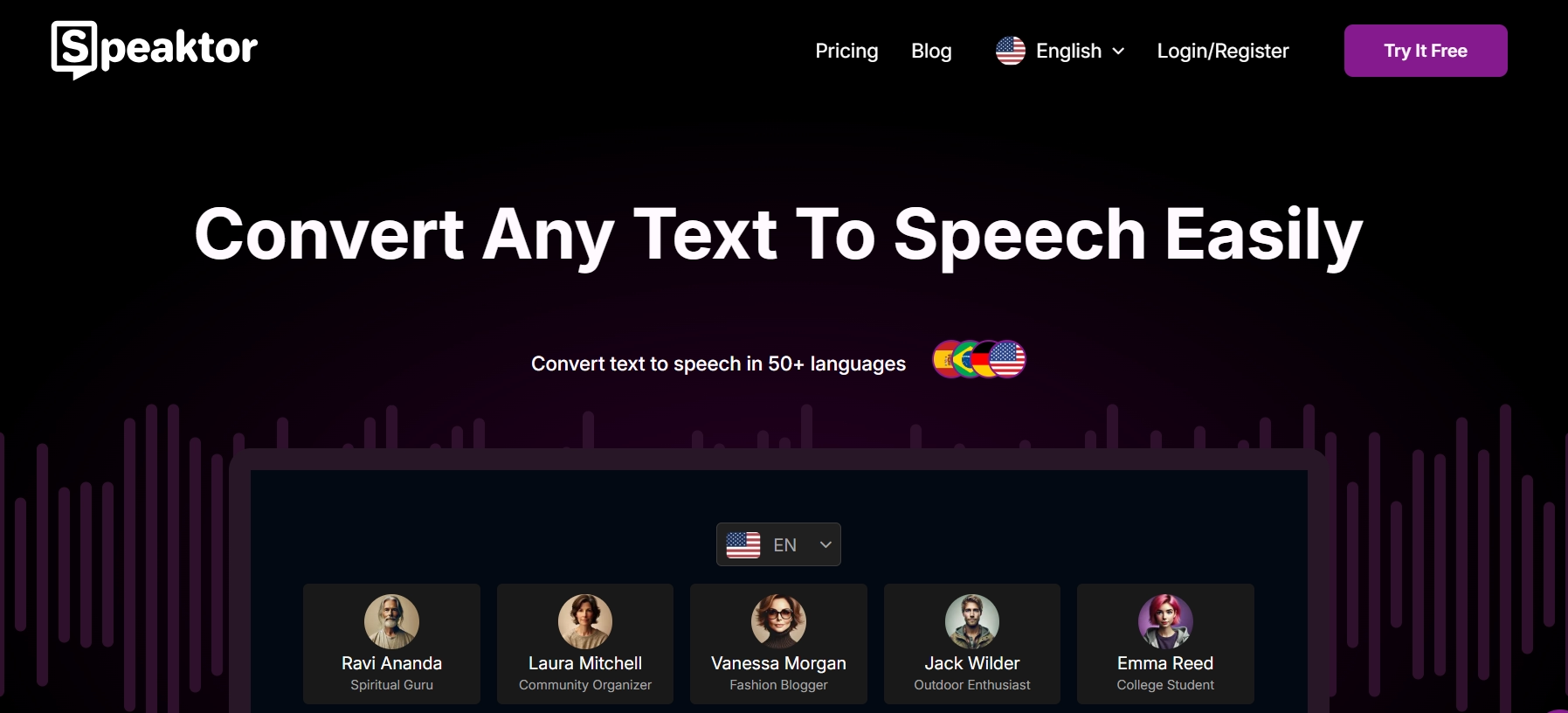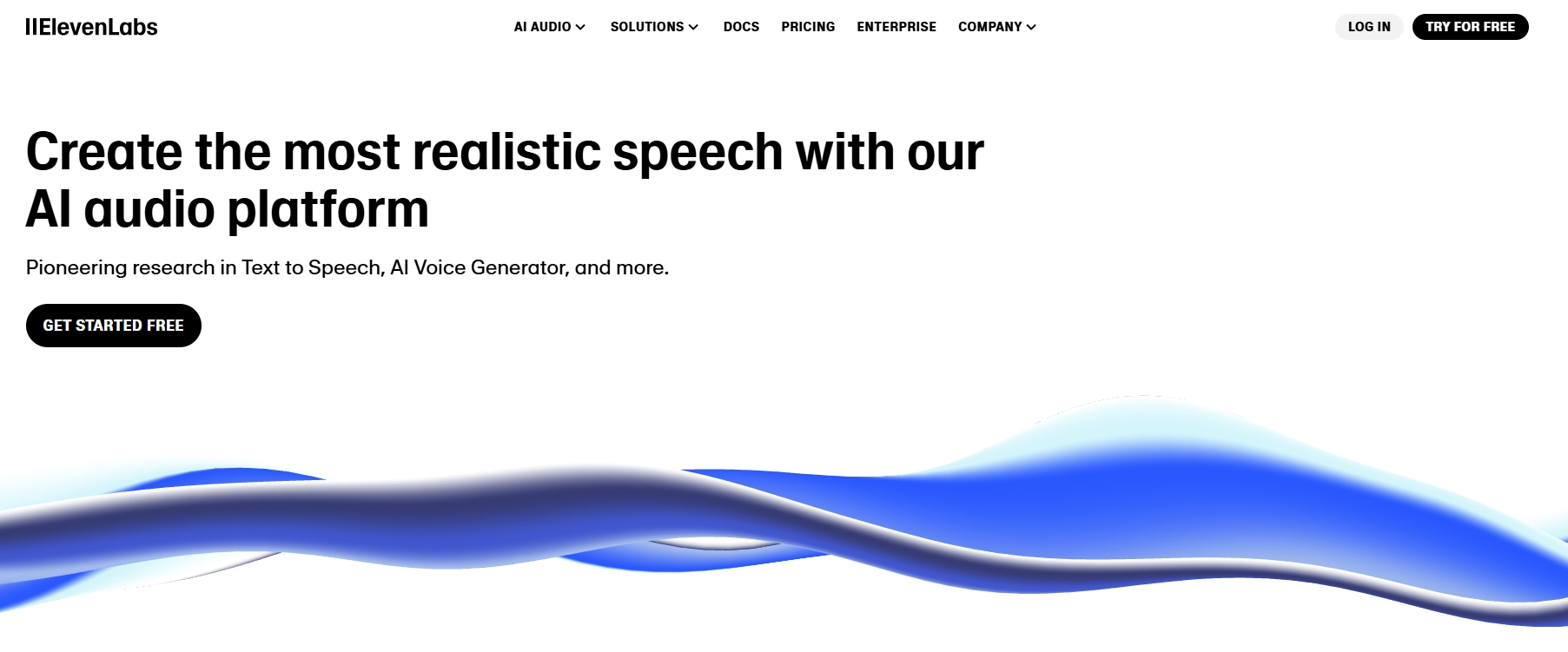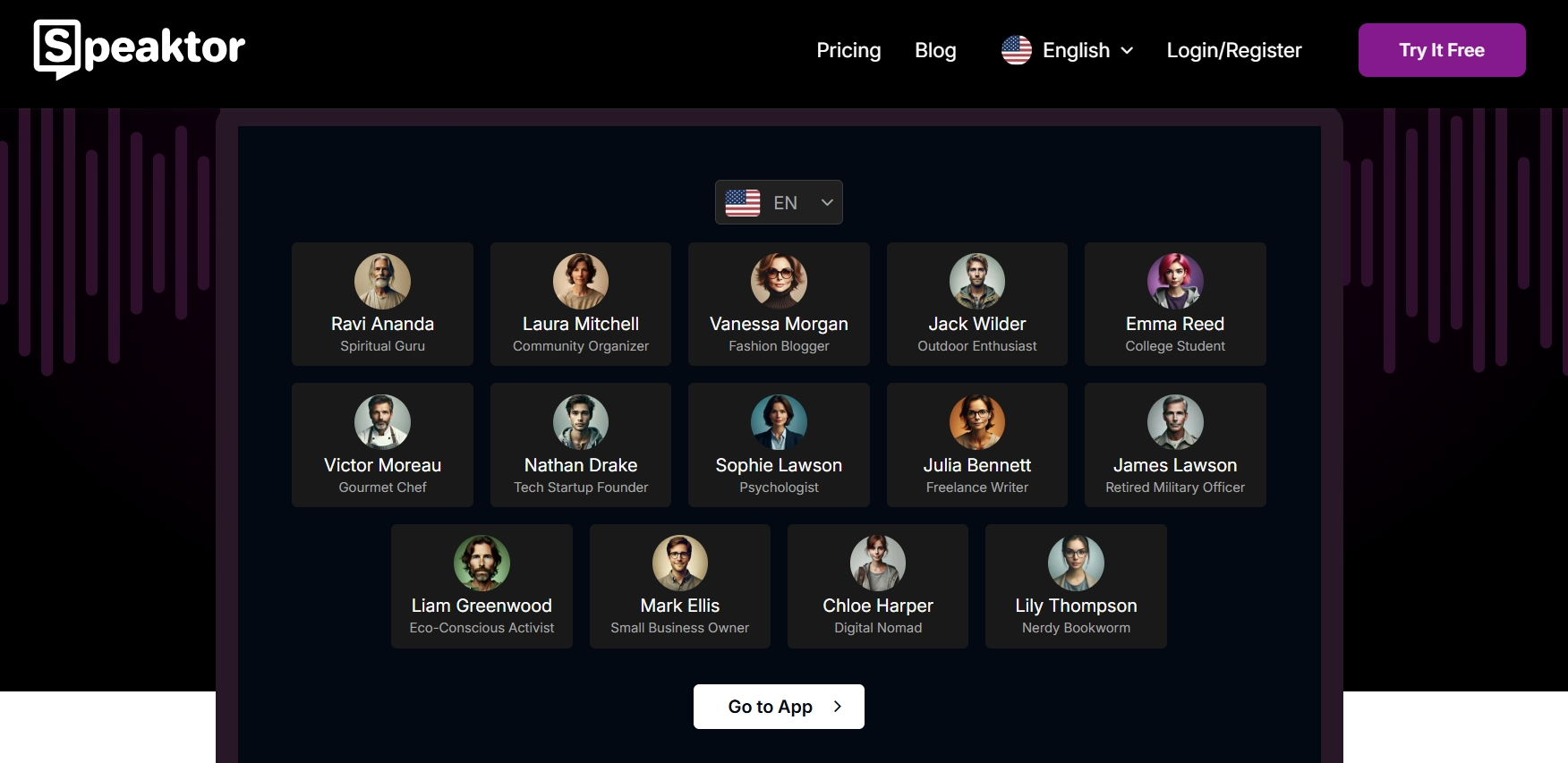
Top 7 AI Narration Tools for Content Creators in 2025
Transcribe, Translate & Summarize in Seconds
Transcribe, Translate & Summarize in Seconds
Content creation has evolved dramatically in recent years, with audio becoming an increasingly crucial element in engaging audiences across various platforms. From marketing videos and e-learning materials to podcasts and social media content, the demand for professional-quality narration has never been higher. However, traditional voice-over production often involves significant time investment and costly voice talent, creating barriers for many content creators.
In this guide, we'll explore the top AI narration tools that are revolutionizing content creation in 2025. We'll compare their features, pricing, and use cases to help you find the perfect solution for your specific needs. Whether you're a digital marketer, educator, or content creator, you'll discover how these advanced tools can streamline your workflow and enhance your content's impact.
The Best AI Narration Tools Compared
Selecting the right AI narration tool requires careful consideration of several key factors. The best solution should offer natural-sounding voices, support multiple languages, provide customization options, and integrate seamlessly with your existing workflow. We've evaluated these tools based on voice quality, language support, customization capabilities, ease of use, pricing, and integration features to help you make an informed decision.

1. Speaktor
Speaktor is a comprehensive AI narration solution that combines powerful features with intuitive usability. Its ability to handle multiple speakers and support for over 50 languages makes it ideal for creating diverse content types. Speaktor is designed to provide a seamless experience for any requirement. It makes it incredibly easy for users to switch from listening to text to reading through multitasking.
Key advantages include:
- Advanced voice customization options for natural-sounding speech
- Excel integration for bulk voice-over generation
- Secure workspace organization with role-based permissions
- Support for multiple file formats, including PDF, TXT, and DOCX
- Comprehensive language support with clear, natural pronunciation

2. Murf AI
As a leading AI voice generator, Murf AI has established itself as a comprehensive text-to-speech converter for professional content creators. The platform combines advanced AI voice synthesis technology with an intuitive interface, making it an excellent choice for businesses seeking high-quality voice-overs.
Key features:
- Extensive voice library with 120+ options
- Real-time voice editing and collaboration
- Commercial usage rights included
- Advanced audio editing capabilities
- Multi-language support with accent variations

3. Speechify
Speechify has revolutionized the text-to-speech online space with its powerful artificial intelligence narrator capabilities. This versatile platform goes beyond basic text-to-speech conversion, offering an impressive array of natural-sounding voices that can handle multiple languages and accents. Its standout feature is the ability to maintain natural intonation and emphasis in speech, making it ideal for content creators who need to produce engaging audio content quickly.
Notable aspects:
- Advanced natural language processing
- Cross-platform compatibility
- Comprehensive browser extension
- Multiple premium voice options
- Real-time text synchronization
- OCR capabilities for image-to-speech

4. Play.ht
Play.ht represents the cutting edge of AI voiceover tools, combining advanced voice synthesis software with powerful customization capabilities. The platform stands out for its neural voice technology that produces incredibly natural-sounding speech patterns and emotional variations. Content creators particularly value its ability to clone voices and maintain consistency across projects, while developers appreciate its robust API for integration into existing workflows.
Distinctive features:
- State-of-the-art neural voice technology
- Comprehensive API access
- Advanced voice cloning capabilities
- Extensive language support
- Seamless WordPress integration
- Custom voice model training

5. Elevenlabs
Elevenlabs has emerged as a pioneer in AI audio generation, pushing the boundaries of what's possible with voice synthesis software. The platform's sophisticated AI voice synthesis engine can produce incredibly lifelike voices with nuanced emotional expressions, making it a go-to choice for creative professionals working on narrative content and immersive experiences.
Key capabilities:
- Professional-grade voice emotion control
- Advanced voice cloning technology
- Ultra-realistic voice synthesis
- Real-time voice generation
- Flexible API integration options
- Custom voice preservation system

6. Descript
Descript stands out in the AI text-to-speech converter landscape by offering a unique combination of voice synthesis and comprehensive video editing capabilities. This innovative platform has transformed the way content creators approach audio-visual projects by integrating advanced AI voice generation with powerful editing tools. Its standout feature is the ability to edit audio content as easily as editing text while maintaining natural speech patterns and intonation.
Main features:
- Integrated video and audio editing
- Advanced transcription services
- Professional voice cloning options
- Real-time collaborative editing
- High-quality screen recording
- Automated filler word removal

7. WellSaid Labs
WellSaid Labs has established itself as a premium AI voice generator solution for enterprise-level clients seeking professional-grade voice synthesis. The platform excels in creating consistent, brand-aligned voices that maintain quality across all content types. Its sophisticated artificial intelligence narrator technology ensures that every piece of content meets strict quality standards while maintaining natural speech patterns. n.
Standout features:
- Professional brand voice creation
- Enterprise-level security protocols
- Comprehensive quality assurance tools
- Advanced team collaboration features
- Robust API integration options
- Custom voice avatar development
How to Choose the Right AI Narration Tool
Selecting the best text to speech software requires careful consideration and systematic evaluation. As AI voice synthesis technology rapidly evolves, new features and capabilities emerge constantly. This makes it essential to evaluate tools based not only on your current needs but also on their potential for future scalability.
Understanding Your Content Needs
Start by analyzing your content requirements thoroughly. Different AI voiceover tools specialize in various content types - from short marketing videos to extensive educational materials. Consider your expected content volume, required languages, and typical project complexity. This initial assessment will help you focus on tools that align with your specific content strategy.
Assessing Voice Quality
Voice quality is the cornerstone of any artificial intelligence narrator. Look for tools that offer natural-sounding voices with appropriate intonation and emotional range. When evaluating voice quality:
- Test voices across different content types
- Check how the tool handles technical terminology
- Assess pronunciation accuracy for industry-specific terms
- Evaluate emotional range and tone consistency
Technical Integration Capabilities
Your chosen solution should integrate seamlessly with your existing workflow. Consider:
- Compatibility with your current content management system
- Integration with editing software
- Connection to distribution platforms
- API availability and flexibility
- Automation possibilities for scaling
Security and Compliance
For businesses handling sensitive content, security is paramount. Evaluate:
- Data protection measures
- Usage rights and restrictions
- Compliance certifications
- Content ownership policies
- Privacy safeguards
Cost and ROI Considerations
Look beyond the basic subscription price to understand the true cost of AI audio generation tools. Consider:
- Usage limitations
- Additional feature costs
- Scaling price structure
- Potential time savings
- Production cost reduction
- Output capacity increases
Tips for Getting the Most Out of AI Narration
The effectiveness of AI narration tools extends beyond their technical capabilities. Understanding how to optimize their use can significantly improve your content's quality and impact. Let's explore essential tips that will help you maximize the potential of your chosen AI voice-generation solution.
1. Script Preparation
Creating properly formatted scripts is crucial for optimal results. Start by ensuring your text has clear punctuation and appropriate capitalization throughout. Break your content into manageable paragraphs that flow naturally when spoken. Avoid using unusual abbreviations or symbols that might confuse the AI narrator. For the best results, break down complex sentences into simpler structures that are easier for the AI to interpret accurately.
2. Pronunciation Management
Most AI voiceover tools offer pronunciation customization features that you should leverage fully. Begin by creating a custom dictionary for your industry-specific terms, brand names, and commonly used phrases. Before proceeding with full recordings, always test how the AI handles critical terms and maintain a comprehensive list of phonetic spellings for words that require special attention. This proactive approach to pronunciation management will save significant time in post-production.

3. Voice Selection Strategy
Selecting the right voice is fundamental to creating engaging content. Professional voices work best for corporate content, while conversational tones are more suitable for educational materials. Take time to test different voices with sample content before committing to a specific voice for your project. Consider your target audience and brand personality when making this decision, as the right voice can significantly impact how your message is received.
For example, Speaktor offers more than 20 voice options for each language. You can choose based on the profession of the target audience.
4. Timing and Pacing Control
Mastering the pacing of your narration is essential for professional-quality results. Use punctuation strategically to control the flow of speech, creating natural pauses and transitions where needed. When working with video content, pay special attention to synchronization requirements. Adjust your script format to accommodate the specific timing needs of your project, whether it's for presentations, videos, or standalone audio content.
5. Quality Assurance Process
Implementing a thorough quality control process is crucial for maintaining high standards. Develop a comprehensive review workflow that includes checking for proper emphasis, natural flow, and correct pronunciations. Pay particular attention to consistency in emotional tone throughout your content. Regular quality assessments will help you identify and address any issues before they become patterns in your production process.
6. Workflow Optimization
Establish efficient production processes that can scale with your needs. Create reusable templates for different content types and implement clear naming conventions for your projects. Develop a systematic approach to version control and establish consistent production schedules. This structured approach will help maintain quality while increasing your production capacity.
7. Brand Voice Consistency
Maintaining a consistent brand voice across all your content is essential for professional results. Create comprehensive voice guidelines that document your preferred styles and settings. Share these standards with your team and regularly review content to ensure adherence to your established voice guidelines. This consistency will help build brand recognition through your audio content.
Conclusion
AI narration tools have become indispensable for content creators looking to produce high-quality audio content efficiently and cost-effectively. Each tool in our comparison offers unique advantages, but Speaktor stands out for its comprehensive feature set, including extensive language support, Excel integration, and robust workspace organization capabilities.
Whether you're creating educational content, marketing materials, or entertainment media, the right AI narration tool can significantly streamline your workflow and enhance your content's impact. Consider your specific needs, test different options, and choose the tool that best aligns with your content creation goals and workflow requirements.
Frequently Asked Questions
Modern AI voice synthesis technology has made remarkable progress in creating natural-sounding speech. Premium tools like Speaktor and Elevenlabs now offer voices that are often indistinguishable from human speech, complete with proper intonation and emotional nuances.
Most professional AI text to speech converters support common formats like MP3, WAV, and OGG for audio output. For input, they typically accept TXT, DOCX, PDF, and various other text formats. Some tools like Speaktor also offer special features like Excel integration for batch processing.
Yes, leading platforms support multiple languages. Speaktor, for example, offers support for over 50 languages with natural pronunciation and accent options. However, the quality and number of voice options may vary by language.
While basic features like simple text-to-speech conversion are usually straightforward, mastering advanced features like custom voice creation and emotional tone adjustment may take several weeks. Most platforms offer comprehensive documentation and training resources to help users get started.

